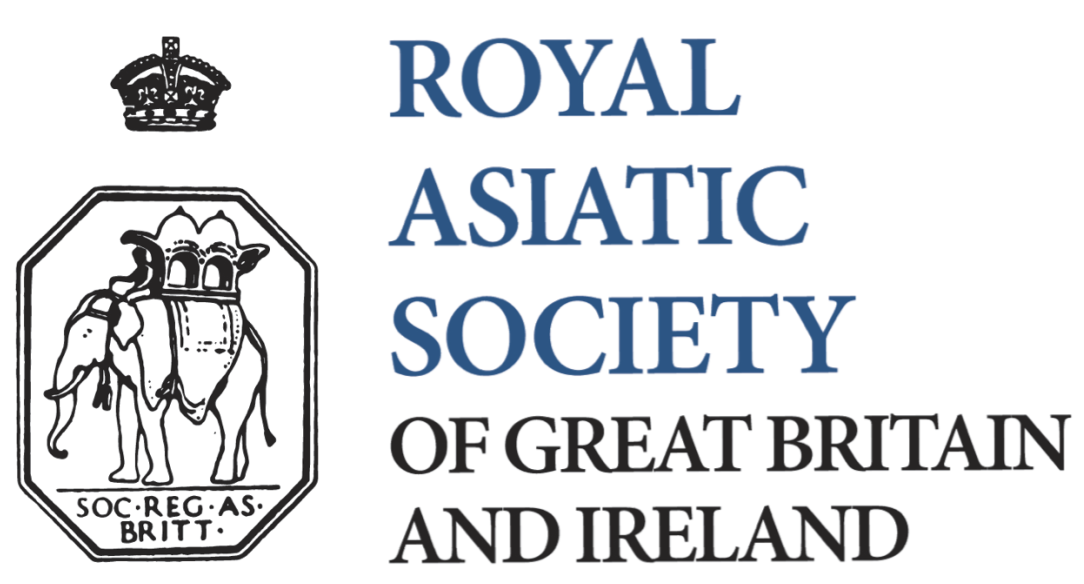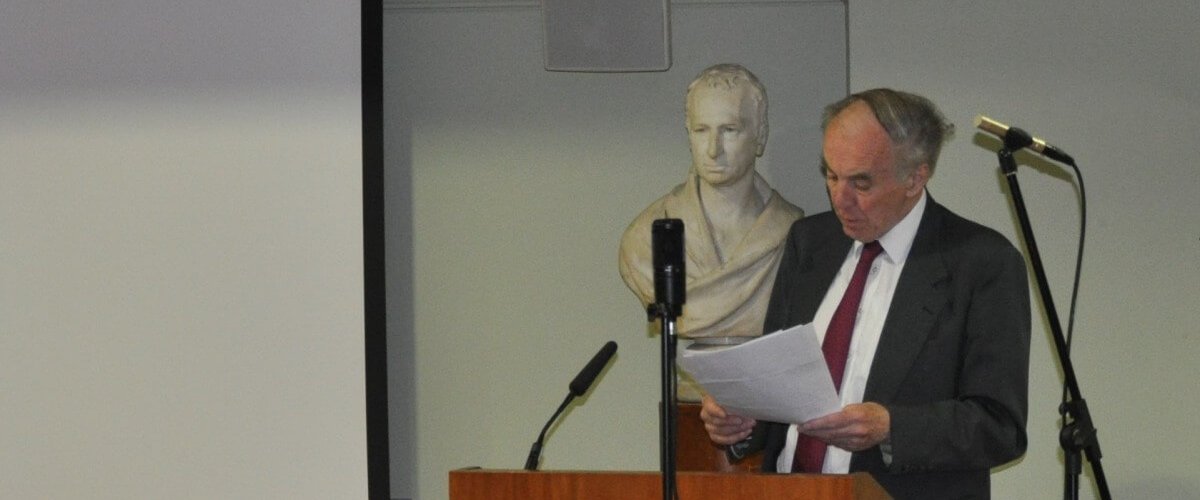Council Member, Lionel Knight, shares memories of the Society
As part of our bicentenary celebrations we asked some members of the Society to share their memories. This week long-serving Council member, Lionel Knight, gives us a few insights. He writes:
“After reading history at Trinity College, Cambridge, I became a teacher, a very happy decision as it turned out for me if not for all my students. To improve my teaching I began some part-time research under Professor Kenneth Ballhatchet at SOAS who, in 1968, suggested that I join the Society. Later, one of the first of my students, Wak Kani, with his friend and mentor the well-known museum curator Ralph Pindar Wilson, nominated me for the Council.

In those days the Society occupied a shabbily elegant building in Queen Anne Street. Lectures, I think, were only for Fellows and guests, but paradoxically the building was open without formalities. The Secretary would whisper anxiously that someone didn’t seem to be a Fellow, but nothing was said. Once, however, an apparent derelict who’d come in during a lecture, sat in the front row and fallen noisily asleep, was identified as Professor Lang, the Armenian scholar. I was told that during the war the building had been a club for Free French officers and had suffered a good deal from their boisterous presence. The Society had neglected to arrange for an inventory of fittings when it moved in, and feared, as the end of the lease approached, that it would have to pay to make things good. Thus, we moved from our Georgian premises to a Victorian town house in Queen’s Gardens.
A strong memory of those early days is of the chaotically accessible Library. Wherever one’s eye might fall, browsing the tumbling piles of books, the charming and erudite librarian, Richard Pankhurst, seemed to have something interesting to say. I remember his remarking on the apparent similarities in the way vowels were attached to consonants between the Indian alphabets and Amharic and Ge’ez. His successor, Godfrey Goodwin, the historian of Ottoman architecture, was equally pleasant and encouraging. But the library itself seemed an amateur affair, with catalogues rather than a catalogue, ad hoc ways of recording borrowing and no sign, as there is now, of anyone working on our manuscript collection.

Meetings were very male affairs. Even at Queen’s Gardens it was explained to me that a solitary female presence at lectures, of the Director’s wife, was necessary because her health made it impossible for her to be left alone. I refer to the fellowship, of course; there were occasional female guests. It was something that struck my wife strongly when she began to come to meetings, though her sari-clad presence, I suppose, offered some explanation in her case for the anomaly.
Both lectures, which were fewer in number, and the Journal had a rather antiquarian flavour. Professor Bivar, who was President in this period, seemed to represent this approach of fascinating erudition which had little to say to the wider world. Over drinks, one often heard echoes of a past generation. After a lecture by the art historian, Michael Sullivan, his Chinese wife upbraided a group of listeners: ‘what is the matter with you English people?’ She had been upset by the paltry attendance at the funeral of their friend, Arthur Waley. Familiar figures, relics of Imperial Britain, were sometimes to be seen. On one occasion there was Lady Alexandra Metcalfe, Lord Curzon’s daughter, and, more often for a time, from the Asquith family, Lady Bonham Carter. The latter invariably replied ‘how nice! how nice!’ to whatever was said to her, a courtesy which provoked some mischievous fellows into ingenious conversational gambits. Overall, there was an interesting mixture of academics, museum curators and people from art galleries and auction houses. There were also a few interested amateurs like myself. I realized how privileged I was at my first Council meeting when we were asked by the President to introduce ourselves. Listening to my neighbour, a distinguished Arabian archaeologist, list his achievements – in apparently random order: vice-president of his local gardening club, Fellow of the British Academy and so on, finally declaring that it would be tedious to continue- I racked my brains for a way of presenting myself as a London schoolteacher without seeming to send him up.
In the late twentieth century there was a sense that the Society had lost its way. Interesting material was still published in the Journal and the lectures could provide a stimulating meeting place for people of different sorts. But if it existed primarily for the exchange of arcane oriental knowledge, the founders’ conception of a hybrid society driving forward a wider public understanding of Asian culture had been forgotten. There seemed, too, a loss of confidence. The library sent its important collection of Chinese books to Leeds University, shelves devoted to the ancient Middle East were cleared, and the Library Committee was wont to discuss what more could be used fruitfully elsewhere. The presidency of Sir Cyril Philips injected fresh energy, but the impetus was evermore directed towards the university, and the trajectory seemed to be leading to a take-over by SOAS, where the Society would exist in a dedicated room with a few hundred of its books.
At my first Council meeting in 1982, we were confronted with a letter informing us that the Society had sold the Jami’al-Tawarikh manuscript of Rashid al-din in a way that had given an illegal advantage to our auctioneer, and that we would be surcharged to the tune of one and a quarter million pounds, divided among Council members. It appeared that in the preceding reign of Sir Cyril, substantial grants to research students had been given for periods longer than one year. A sudden move away from high interest rates had left the Society unable to meet its obligations, for which it had been decided to sell one of its treasures. As a new Council member, I had not been informed of any of this. Fortunately, the Society’s solicitor rebutted the charge of illegality and we trustees breathed again. However, the spreading knowledge of the sale and rumours of financial skullduggery led to all hell breaking loose at the following extraordinary general meeting. The collector Edmond de Unger demanded to know how things had reached this point. A red-faced Professor Duncanson shouted: ‘because I am a financial idiot’. Fellows had flocked in from other parts of the country to this and subsequent meetings, generally quite uninformed but bent on savaging the management of the Society. Against this, the baffled courtesy of Professor Bivar was no match. As President he was sadly unable to recover the initiative with a vision of the Society’s future.
After our next move, to Stephenson Way, the financial situation improved, and in particular the opportunities of a substantial rental income offered the base for a much more active and ambitious programme. What was needed was leadership with vision and the time and energy to implement it. After a while this was provided by Professor Francis Robinson and Professors Robb and Stockwell and Dr Johnson; and a professional Director, Dr Ohta, who, remarkably, combined personal skills with academic knowledge and contacts, and administrative ability.”
We are grateful to Lionel for taking time to write this piece and also for all the many hours he has given to serving the Society. He has been one of the several dedicated Council Members who, alongside our Director, Dr Alison Ohta, have helped steer the Society into the 21st century and beyond. The collections are now well cared-for, we have a lively programme of lectures and other events, the Society continues to publish its Journal and monographs, it is on a firm financial footing and we have a thriving membership.
~ ~ ~ ~ ~
Our Executive Officer, Camilla Larsen, from time to time posts Membership Profiles on our website. The latest one is from Dr Matteo Miele, Assistant Professor at the Department of Political and Social Sciences of the University of Florence and an Affiliated Associate Professor at the Center for Southeast Asian Studies (CSEAS) of Kyoto University. Here is a taster of what he writes:
What would you say are the benefits of being a fellow of the RAS?
I am always happy and proud to be a fellow of the Royal Asiatic Society. It is an extraordinary world. When I had the opportunity to speak to the Society in the 2014 Student Series presenting my doctoral research, it was a precious moment in terms of studies, but also an opportunity to meet many scholars and students. It is a network of passionate, enthusiastic, and curious people. Exchanging ideas, advice, and information with them, even remotely, makes you feel part of a wonderful organization. When I meet or read about another fellow, even from the past, I immediately think “she/he’s one of us”.
The historic material from our Lectures and Events has all been catalogued and I was able to find the poster advertising Matteo’s lecture:

His full profile can be found here and the archive of other member profiles can be found here. If after reading all these accounts about the life of, and possibilities of involvement in, the Society, you would be interested in also becoming a member, full details of the process can be found here.

